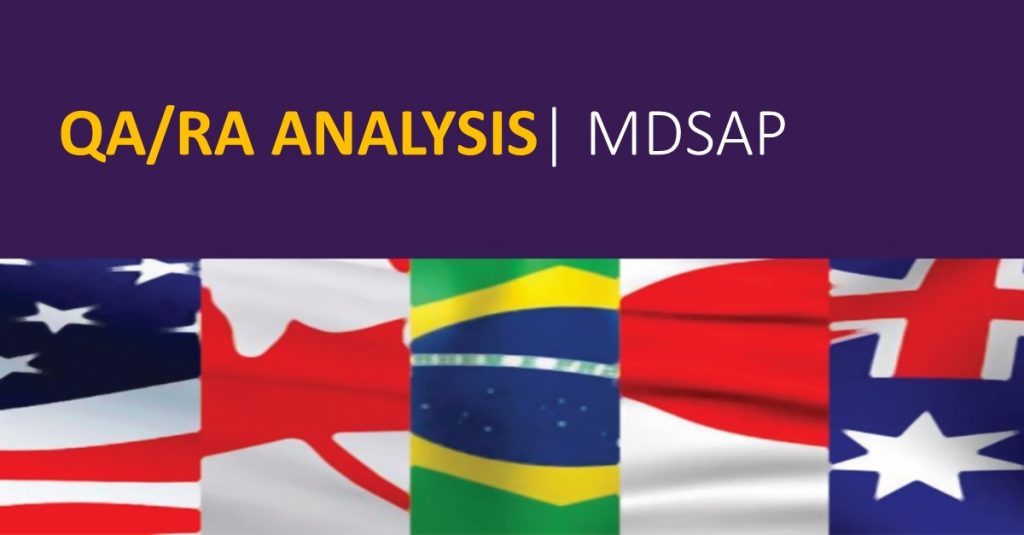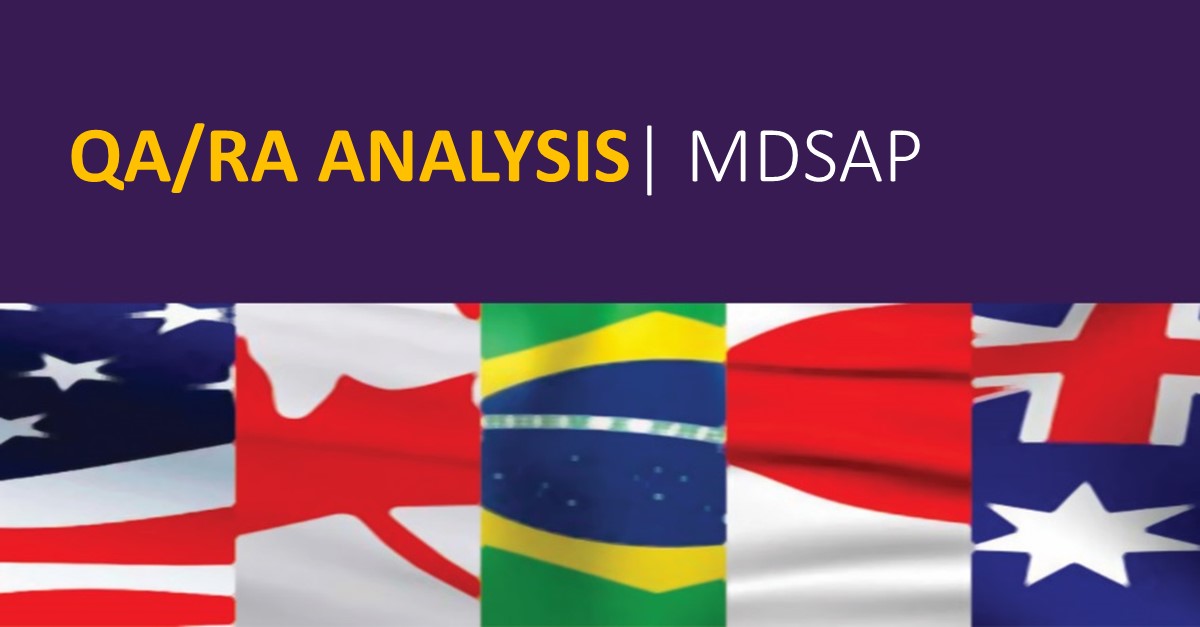Although initially they may be deemed to be more expensive and complicated, MDSAP audits will provide a more efficient way of ensuring compliance with QMS and at the same time, reduce the audit/inspection burden on both medical device companies and regulatory authorities. In this blog I will provide a basic overview of the program and offer suggestions to prepare manufacturers for MDSAP.

What is MDSAP?
The Medical Device Single Audit Program (MDSAP) is a single audit Program developed for medical device companies by the International Medical Device Regulators Forum (IMDRF). It is used as a substitute for several different regulatory authority audits to fulfill ISO 13485, and respective regulatory requirements.
The MDSAP program allows MDSAP recognized Auditing Organizations (AOs) to conduct a single regulatory audit of a medical device manufacturer’s quality management system. This audit will satisfy the requirements of the medical device regulatory authorities participating in the MDSAP program.
MDSAP is a longer and more expensive process than current ISO 13485 audits; however it reduces the number of audits that a company might receive from up to 6 regulatory authorities. The cost of MDSAP registration and audit processes is variable depending on the product risk categories and the size of the company.
Why has MDSAP been developed?
MDSAP provides less regulatory and business burden on medical companies by reducing the number of inspection/audits that disrupt regular activities; a single MDSAP audit will satisfy the relevant requirements of those regulatory authorities that participate in the program. MDSAP promotes global alignment of regulatory approaches and technical requirements based on international standards and best practices. In addition, MDSAP frees government agencies resources to focus on high risk medical devices.
Who are the participants?
Under MDSAP, Australia, Brazil, Canada, U.S. and Japan jointly leverage regulatory resources to manage an efficient, effective, and sustainable single audit program focused on the oversight of medical device manufacturers. The World Health Organization (WHO) and the European Union (EU) are Official Observers.
What are needed to be considered?
- 13 auditing organizations (AOs) applied to conduct MDSAP audits
- 10 have been authorized by the IMDRF to perform MDSAP audits
- Not all authorized auditing organizations (AOs) are recognized by all participants in MDSAP; for example, Brazil recognizes only 7 so be aware of which market you are targeting when selecting your AO
- In addition to MDSAP requirements, you need to consider other changes in the regulatory environment; for example the MDR and IVDR regulatory changes in the European Union.
What is the current status?
- Health Canada is putting its weight behind the program with FDA support
- Health Canada announced that only MDSAP certificates will be accepted by Canadian regulators after 31 December 2018
- During the two year transition period, Health Canada will accept certificates issued under both CMDCAS and MDSAP
How can you prepare for MDSAP?
MDSAP audits may be scheduled during the next scheduled annual ISO 13485 audit – communicate early with your registrar
Manufacturers should implement all applicable requirements in accordance with the scope of their activities
Manufacturers may perform internal audits using the MDSAP audit documents (Audit Model and Companion document are available on FDA Website)
Communicate and consult with experts regarding audit planning and scheduling
Conclusion
MDSAP audits will provide a more efficient way of ensuring compliance with QMS and at the same time, reduce the audit/inspection burden on both medical device companies and regulatory authorities. In addition to MDSAP audits conducted by recognized MDSAP Auditing Organizations (AO), participating Regulatory Authorities may choose to audit certain manufacturers at any time.
Bahareh Ahmadkhan is a StarFish Medical Senior QA/RA Specialist based in Toronto. This is her first blog (and video) for StarFish. She has extremely good patience with marketing people who ask for a lot from QA/RA professionals.
Astero StarFish is the attributed author of StarFish Medical team blogs. We value teamwork and collaborate on all of our medical device development projects.
Images: StarFish Medical
